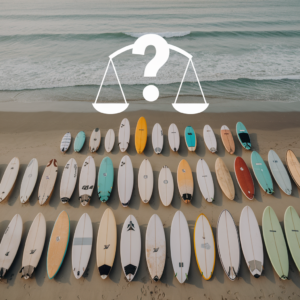Have you ever finished a surf session and regretted not wearing a surf hat? Quite often, it is the last thing you think about when you’re frothing to go out for a sesh.
I realize that not every surfer is a fan of wearing a hat in the water, but there are a number of benefits to be considered.
1. Surf hats can protect from skin cancer
A recent study from Bond University in Queensland, Australia on competitive and recreational surfers reveals shocking results.
This study investigated the lifetime prevalence of skin cancers among Australian surfers. Here are the key findings:
Prevalence of Skin Cancers
- Out of 1,348 surfers surveyed, 184 (13.6%) reported having had a skin cancer.
- Basal cell carcinoma (BCC) was the most common type, affecting 6.8% of surfers.
- Melanoma was found in 1.4% of surfers, while squamous cell carcinoma (SCC) affected 0.6%.
Risk Factors
Competitive vs Recreational Surfing
- Competitive surfers had a 74% higher risk of skin cancer compared to recreational surfers.
Gender Differences
- Male surfers (14.6%) reported significantly more skin cancers than female surfers (9.4%).
Body Location
- The most common locations for skin cancers were:
- Face (23.5%)
- Back (16.4%)
- Arms (12.4%)
I’ve had cancer and it sucked. It wasn’t skin cancer from sun exposure but it still sucked. If you are someone that is sensitive to the sun or has a history of skin cancer, wearing a hat while surfing is a great option to protect your head and face from the sun, which are the two areas most vulnerable to skin cancer.
Bottom line is, use a hat, and choose one with a good UV protection rating.
2. Regular hat Vs. Surf hat
The biggest problem with wearing a regular hat while surfing is that it won’t stay on your head. Here are some different strategies to keep a hat on your head while surfing, including:
- Tightening an adjustable hat so it is extra tight on your head and won’t come off in the surf
- Tying a string from your rashguard/wetsuit/vest to your hat so it stays attached to you when it come off
Best option: Wear a surfing specific surf hat with chin strap
Also consider that a surf-specific hat is designed to withstand saltwater exposure, ensuring better durability and longevity compared to regular hats.
3. Best types of surfing hats to choose from
When you’re out catching waves under the bright sun, having the right gear is essential, and that includes a good surfing hat. These hats not only protect your face from harmful UV rays but also help keep you comfortable while you focus on your ride.
Many of the hats come with a built in chin strap to keep the hat connected to your head. Other hats provide a wide, round brim for extra sun protection, hidden pockets and some styles even float.
In the table below, you’ll find an overview of various types of tropical surfing hats, along with their features and benefits, to help you choose the perfect one for your next surf session.
| Type of Surf Hat | Description | Key Features |
| Surf Bucket Hat | Wide-brim hat made of lightweight, quick-drying materials. Protects face, neck, and ears. | Chin strap, water-resistant, optional neck flap. |
| Surf Cap | Baseball cap adapted for surfing with quick-drying fabric and chin strap. | Brim for sun protection, adjustable straps, lightweight. |
| Wide-Brim Surf Hat | Bucket hat with a wider brim for extra sun protection. Made from water-resistant materials. | Excellent sun coverage for face, neck, and shoulders. Secured with chin straps. |
| Visor Surf Hat | Visor with adjustable strap, providing sun protection while keeping the head open for ventilation. | Sun protection for eyes and face, breathable design. |
| Waterman Hat | Hat made specifically for water sports, combining cap and bucket hat features with extra durability. | Water-resistant, sturdy, chin strap, UPF-rated fabric. |
| Legionnaire Hat | Cap with an extended neck flap for additional protection from the sun. Commonly used in sports and outdoor activities. | Neck protection, lightweight, quick-drying, often includes chin strap for security. |
| My personal favorite:
The ultimate hat style, which combines all of the features in one would be the “indo hat”. Made from synthetic, quick dry material, the indo hat includes a wide, round brim for maximum sun protection, fold away chinstrap and a neck protector flap for those long days on the water. |
4. Surfers hats can protect your eyes
An overexposure to the sun’s ultraviolet light can cause eye discomfort in the short term and more serious conditions over the long term.
Surfer’s eye, or Pterygium, is a condition caused by exposure to irritants like sand, wind and an overexposure to ultraviolet light. It results in a pink, fleshy growth on the white part of the eyeball that can begin to impact your vision.
Obviously, wearing sunglasses is the best prevention method for the surfer’s eye but they are not always practical to surf in, but wearing a hat is recommended as well.
“Studies have found that wide brimmed hats can reduce the ultraviolet light reaching our eyes by up to 50%.”
5. Do your research, check the weather
It is important to check the weather before going surfing so that you can decide on what to bring to the beach. Most surfers will adjust their packing based on the forecast.
In smaller waves, with lulls between wave sets, it is easier to keep a hat on your head while surfing. As the conditions become more intense, including wind and bigger waves, it becomes more difficult to paddle, duck dive and surf with a hat on your head.
Always pack a hat and you can be prepared for whatever conditions await at the beach.
6. What if you don’t have a surfing hat?
With some creativity and a little handy work, you can make a solid, secure surfing hat with things you already own. If you own a hat, string and scissors, you can make a surf hat that you won’t lose in the ocean.
On my last surfing trip to Mexico, I tied a shoelace from my trucker hat to my rash guard. I didn’t spend much time putting it together but it prevented me from losing my hat when it came off my head. I quickly found out that tying a string from my hat to my rash guard every session wasn’t the most efficient process.
7. Don’t worry about how you look
In all honesty, when I told my friends I was going to write an article about surfing hats, they said “Number 1, don’t wear a surfing hat” Obviously, it was meant to be a funny joke, but there is truth to the fact that people care about what they look like and surfing hats get a bad rap for their cool factor, or lack thereof.
If you are reading this article, it’s likely for one of three reasons:
- You are thinking about wearing a surfing hat
- You have worn a hat while surfing at some point
- You are thinking about getting a hat for your child
Just a reminder:
Don’t worry about what you look like!
I have seen plenty of really talented surfers wearing surfing hats. I have even seen someone absolutely ripping the waves apart in a Speedo, a helmet and nothing else. There isn’t a required surfing uniform – so anything goes!
What is the Cost of a Surfing Hat?
The cost of a surfing specific hat ranges from $20-$50 depending on what style or brand ends up working for you. At the end of the day, it’s a small price to pay for extra protection from the sun.
I have listed a few of the different options with costs in the table below.
| Model | Company | Price |
| Technical Hat | Surf Munkey | $35.00 |
| Trucker Hat | Buoy Wear Floating Hat | $35.00 |
| Bucket Hat | FCS | $22.00 |
| Floppy Hat | Quicksilver | $26.00 |
| Indo Surf Hat | Dakine | $30.00 |
| Hats for Kids | Swim Zip | $17.00 |
Conclusion
A quality surf hat is a must in your travel bag if you plan a trip to a tropical location. It will defenitely improve your quality of surf. Now it doesn’t mean you need to wear hat everytime the sun is out. In any temperate location, you can definitely get away without it. But always wear sun screen, there is no excuse for that!
If you find this info useful, you might also like the followin articles:
How to Stop Wetsuit Rash: 10 Tips for Surfers



